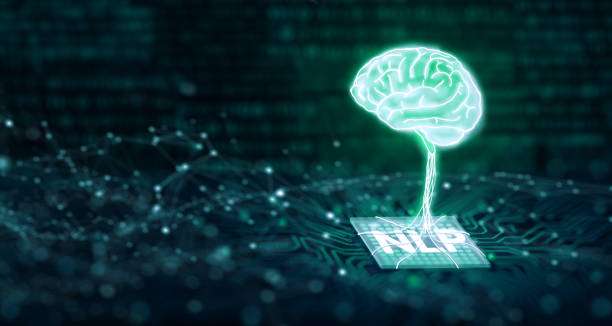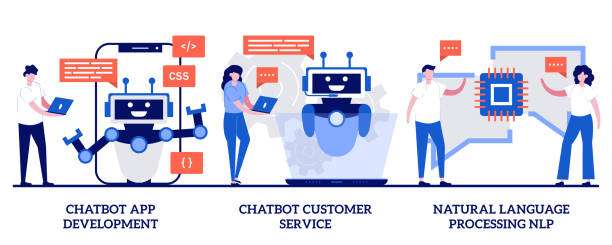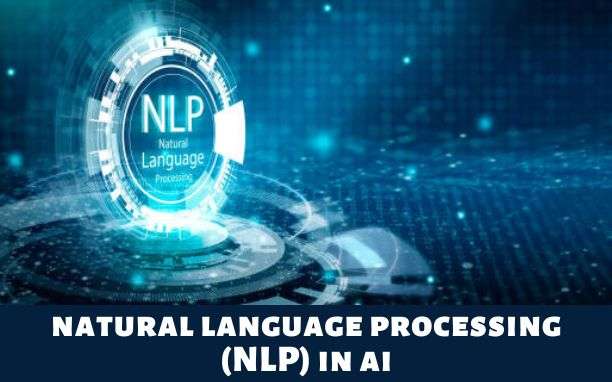In order to help you better understand the role of natural language processing, let’s first define exactly what NLP is. For those who don’t know, NLP stands for Natural Language Processing. This means that we use algorithms to process human languages. But before you can do this, there are some key things you need to understand about how humans speak to one another.
The first thing you should learn is called linguistic semantics. Linguistic semantics refers to meaning. And this is different from grammar. Grammar is just a set of rules that tells us what to say and when to say it. Meaning, on the other hand, tells us why we want to say something or not say it at all.
This distinction between meaning and grammar is important because many people confuse them. In fact, they think that if someone doesn’t use the correct grammar, then he must have no idea what he’s saying. But, this isn’t necessarily true.
NLP is the idea of creating computer programs that can understand human language. It’s the basis of many things we do every day. For example, if we are reading this post on a mobile phone, then it is because our device has understood the text and spoken back to us. Our devices also use Google to search for information when they don’t know what to say. So, obviously, it’s important that computers can talk to people.
What Is Natural Language Processing?

Natural Language Processing is a field of study which involves using computers to understand human languages. For example, if you want to use a computer to read a book, you would ask the machine to do this instead of reading it yourself.
Natural Language Processing is a type of artificial intelligence. This means that the machines are able to learn how to do things just like humans can.
For instance, a robot may be able to pick up an object and put it in a box. This is a task that we might not think a robot could accomplish. But with the help of Artificial Intelligence, robots can now do these tasks.
What is Natural Language Processing in AI?
AI refers to artificial intelligence. Natural language processing (NLP) is a branch of computer science that deals with the interpretation of human languages. NLP helps computers understand natural language so that they can communicate with humans. This article will discuss some of these concepts.
First, let’s define Artificial Intelligence. The term “artificial” means created by man. As such, AI does not exist in nature. However, it was once thought to be impossible for machines to have true understanding.
Artificial Intelligence is now possible due to advances in computing power and the development of software programs capable of learning from previous experiences.
In fact, the first known attempt at creating an intelligent machine occurred in 1642. A French mathematician named Blaise Pascal wrote a program that could calculate the area under a curve using a series of numbers.
It wasn’t until 1956 that Alan Turing proposed his theory on how to create artificial intelligence. His idea was that an algorithm would need to be able to read, understand, and respond to human speech.
The field of NLP began in the 1960s. It has since been used in many applications, including medical diagnosis, text mining, information retrieval, automated customer service, and translation.
How does Natural Language Processing Work?
Language processing is a term that describes the ability to understand language. When you use a computer, you can type in words into a search box. The computer will then try to match these words against other information.
NLP uses algorithms to analyze the words that people say. The program then looks at what type of word it is, where it came from, and so on. From there, it tries to figure out what is being said. For example, if you typed in “how do I get rid of my acne?”, then the computer would be able to look through its database of articles and find one that matched your question.
When you want to perform a natural language query, you need to know the following:
- What you are looking for what do you already have in your data set how do structure the input
- You should also make sure that you ask the right questions. If you don’t, then your results won’t come up with anything useful. You can learn more about this by reading the next section.
- A good way to do this is to create an index of all of your keywords. Then, you can enter each keyword separately. This means that you will end up getting different types of matches.
The idea behind NLP is to read and understand natural language, and to identify words, phrases, and sentences that are likely to be relevant to the task at hand. NLP tools are commonly used to build a search engine, analyze a document for trends and patterns, or aid a business in understanding the language used by its customers.
Categories of Natural Language Processing
In natural language processing (NLP), algorithms are used to extract meaning from text. NLP techniques are often used in computer vision, machine translation, and spam filtering systems. NLP systems can be categorized into two broad groups, rule-based and statistical.
- Rule-Based algorithms look for patterns and relationships in texts.
- Statistical methods analyze text based on probability.
Types of Natural Language Processing
Natural language processing is the process of using computers to read and understand human-written text. So, if we’re talking about “processing” natural language, we’re talking about the use of computer algorithms to understand written text.
There are four different types of natural language processing NLP.
- Classification takes the words we have and groups them into categories.
- Information retrieval pulls relevant data out of a database based on what keywords we input.
- Semantic Parsing allows us to read meaning into words by analyzing their relationships.
- Topic Modeling looks at the structure of a document and determines its primary topics or themes.
Natural Language Processing Techniques
Natural language processing is a set of techniques and procedures for processing natural languages such as human speech, written texts, emails, etc. NLP techniques are employed in many areas of technology including speech recognition, language translation, natural language generation, data mining, machine learning, search engines, content management systems, information retrieval, and information extraction. They are used to improve the functionality of computer applications.
Uses Of Natural Language Processing
Natural language processing (NLP) refers to software that analyzes written or spoken text for the purpose of deriving knowledge. One of the primary uses of NLP is to identify the intent of a statement and figure out the appropriate response. Some common applications include email reply bots, chatbots, and voice search.
In the last decade, natural language processing (NLP) has become more popular. There are many reasons why this is happening, but one of them is that NLP can be used to make computers understand human speech better. This allows people to interact with machines in ways that were never possible before. For example, a person could use an online chat system to talk to another person who doesn’t speak English. Or someone could record their own voice and have it played back to them by a computer. This would allow people to communicate even though they don’t know each other’s native languages.
There are also applications for using NLP in everyday life. People can now use their mobile devices to access maps, weather reports, and directions. And there are lots of companies that offer services like these through apps.

There are also several other uses for this technology, including:
- Searching for relevant content online.
- Extracting key phrases from the text.
- Identifying trends in social media posts.
- Automated Content Generation.
- Sentiment Analysis.
- Summarization.
- Text Mining.
- Translation.
- Chatbots etc.
Last But Not Least is that NLP is a big part of the AI boom. From machine learning, chatbots, and deep learning, here’s what the future holds for AI.







